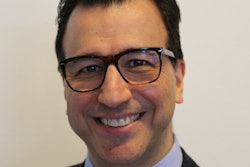Medical imaging's increasingly essential role in the diagnosis and treatment planning of patients in almost all fields of healthcare has prompted physicians, clinicians, and other subspecialists to claim any one of the imaging modalities for their own domain.
The infringement on ground that traditionally has been the sole ownership of the radiology department has created "inescapable" turf battles in many hospitals, according to Dr. Philippe Grenier, chairman of the department of diagnostic radiology at Pitié-Salpêtrière Hospital in Paris.
Speaking at ECR 2011, Grenier outlined eight ways radiologists and radiology departments can outperform and outwit their colleagues, and prove themselves to be indispensable to any healthcare facility.
Here is Grenier's advice:
Improve the management of the radiology department. "We have to provide high-quality, permanent imaging services 24 hours a day, seven days a week, for all modalities and respond on time to all demands of emergency medicine," Grenier said. "But it is not enough. We have to develop efficient quality assurance programs to ensure patient safety in all areas." In addition, install quality management and collaborate closely with the director of quality in the hospital. The key is to be proactive in these areas.
Increase productivity in the department by responding rapidly to requests for images for hospitalized patients. By doing so, it will reduce the length of stay, which, in turn, could lessen in-house income. So, the radiology department must develop an outpatient imaging program to increase volume and income for the hospital. "The radiology department produces a lot of expenses, and the money from the patients goes back to the clinicians, not the radiologists," Grenier said. "That's why the development of imaging for outpatients is a way to compensate for the imbalance in the radiology department."
Provide efficient radiology services to make the administrative director happy. If the administrative director is pleased with the department, he or she will not fragment the radiology and buy new equipment to install it in other clinical departments. "You also can convince him [or her] to build up a multimodality suite for interventional radiology," Grenier added.
Staff competency
Reinforce the competency of the radiology staff by training personnel to respond to all demands from emergency medicine. By developing specialization within different fields of radiology, the department can provide high-level response to all the clinician's expectations. "It is very important to maintain in every specialty present in the hospital some level of expertise between the subspecialized radiologist and the corresponding clinician," Grenier said. He recommended having at least two staff radiologists in every subspecialty to avoid lapses in service.
Once that competency is established, make the radiologists' expertise more visible in the hospital. Establish clinical meetings within the radiology department, and ask clinicians to attend and discuss cases in front of the radiologist. "It is the best way to demonstrate to clinicians that the expertise of radiologists is much higher than the simple written report," Grenier noted. "It is also the best way to show young clinicians and young physicians that the radiologist is an expert available to contribute to a specific diagnosis, define a strategy, and an approach to the diagnosis, the workup, therapy, and follow-up."
As the chairman of a department, play the game of politics and reinforce your position. Grenier recommends forging an alliance with clinicians who have no desire to engage in a battle against radiologists. "From my experience, I can tell you it helps significantly to be head of the medical board," he added. "Radiologists are particularly well prepared to have a strong position like this, because we have contact with all clinicians; we know very well all the different departments."
Regional activities
Beyond the hospital, radiologists need to develop their activities on the regional, national, and European levels to encourage more aspiring healthcare students to choose radiology as their profession. Understaffing, Grenier warned, is the biggest risk to losing turf battles.
Promote studies that compare radiologists' performance against clinicians, emergency medicine physicians, and other specialists in interpreting similar images. Previous research has found that radiologists and radiology residents more often than not outperform their colleagues who also read images.
Keep radiologists informed and up-to-date on the latest advances in emerging technologies within medical imaging. Grenier recommends informing the radiology staff about clinical trials, promoting research in the curriculum for training radiology, and participating in molecular imaging. "Today's research is tomorrow's clinical practice," he said.



















